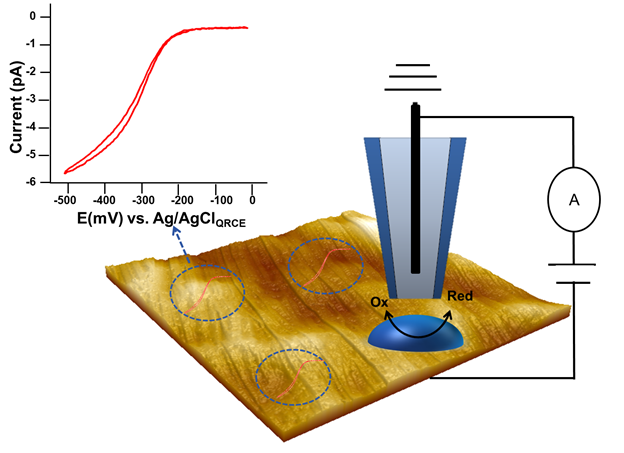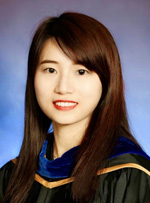Thesday, March 9, 2021
- 10:30 am
(PKT)
Islamabad, Pakistan - 11:00 am
(IST)
Bangalore, India - 13:30 pm
(SGT)
Singapore, Singapore - 16:30 pm
(ADET)
Sydney, Australia

Linear cyclic voltammograms obtained from dispensing droplets of Ru(NH3)6Cl3 solution at a HOPG surface in the SECCM format with a glass pipette using a Park NX12 system . The CV was recorded at a sweep rate of 10 mV/s.
The application staff of Park Systems will present an introduction to Scanning electrochemical cell microscopy (SECCM). SECCM is a nano-electrochemical scanning probe technique that creates a confined electrochemical cell (droplet) via meniscus contacting the surface by employing an electrolyte filled micropipette containing a quasi-reference counter electrode (QRCE). It allows researchers to investigate the local electrochemical properties of the electrode surfaces by directly mapping the electroactivity with nanoscale resolution. The electrochemically reversible [Ru (NH3)6]3+/2+ electron transfer process at a highly ordered pyrolytic graphite (HOPG) surface was recorded using the Park NX12 AFM system in this study.
Join us as the technical services engineer at Park Systems, explain the basics of SECCM and quantitative electroanalysis at the nanoscale using the Park NX12 AFM System.

Presented By :
Jiali Zhang, Ph.D., Applications Engineer, Park Systems
Jiali Zhang, Ph.D., is an engineer for Park Systems, where she focuses on the installation and support of AFM systems for Park’s research user base. She is also responsible for researching and writing technical papers and application notes for publication and presentation at scientific conferences. She received her Ph.D. in Analytical Chemistry from the University of California, Davis, and holds a B.S. in Applied Chemistry from Donghua University in Shanghai, China. Her expertise spans numerous microscopy techniques, and areas of study have also included biological systems and 3D printing technologies.






